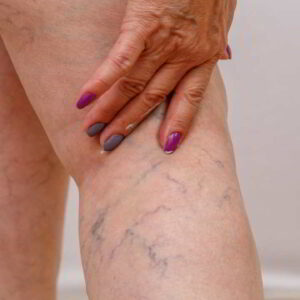Snoring is a common issue that affects sleep quality—not just for the individual but also for anyone within earshot. While it’s often dismissed as a minor nuisance, chronic snoring can be a sign of more serious underlying problems, especially when associated with nasal obstructions or structural deformities. Surprisingly, one of the lesser-known solutions to persistent snoring lies in cosmetic surgery—specifically, rhinoplasty. In some cases, individuals suffering from long-term breathing issues and sleep disruptions may benefit significantly from procedures like Rhinoplasty Dubai Silicon Oasis, which not only enhance facial aesthetics but also improve nasal airflow.
Understanding Snoring: More Than Just a Noise
Snoring occurs when the flow of air through the mouth and nose is partially blocked during sleep. This blockage causes tissues in the upper airway to vibrate, producing the familiar rumbling or rattling sound.
Primary Causes of Snoring Include:
-
Nasal congestion or obstruction
-
Deviated nasal septum
-
Enlarged turbinates
-
Weak throat muscles
-
Excess weight leading to extra tissue in the throat
-
Alcohol consumption and sleep position
What Is Rhinoplasty?
Rhinoplasty, often referred to as a “nose job,” is a surgical procedure aimed at reshaping the nose for aesthetic or functional purposes—or both. While many pursue it for cosmetic reasons, a functional rhinoplasty targets internal nasal structures to enhance airflow and correct physical abnormalities that contribute to breathing problems.
How Rhinoplasty Addresses Snoring?
Correction of Deviated Septum
One of the most common internal nasal issues is a deviated septum—when the wall dividing the nasal passages is off-center or crooked. This misalignment can significantly restrict airflow through one or both nostrils, contributing to snoring. Rhinoplasty can correct this issue by repositioning or trimming the septum.
Reducing Turbinate Size
Turbinates are small structures inside the nose that filter and humidify the air. When these become enlarged (a condition called turbinate hypertrophy), they can block airflow. A rhinoplasty procedure can include turbinate reduction to improve nasal breathing.
Nasal Valve Reconstruction
The nasal valve is the narrowest part of the nasal airway. Even minor collapses in this area can lead to significant breathing issues. Rhinoplasty can reconstruct this area to open the passage, thereby reducing snoring.
Treatment Process: Step-by-Step Guide to Functional Rhinoplasty
The process for undergoing functional rhinoplasty typically involves several stages. Here’s an overview:
Consultation and Evaluation
-
A thorough medical history is taken.
-
Nasal examination and possibly imaging studies (e.g., CT scan) are done.
-
Snoring severity and its impact on quality of life are assessed.
Pre-Surgery Preparation
-
Avoidance of blood-thinning medications and smoking.
-
Instructions on fasting before the procedure.
Surgical Procedure
-
General or local anesthesia is administered.
-
Internal incisions are made to access the nasal structure.
-
Correction of the deviated septum, turbinate reduction, and valve repair are done.
-
Nasal splints or packing may be used temporarily.
Recovery Period
-
Swelling and mild discomfort are expected.
-
Breathing may initially feel blocked due to swelling.
-
Full recovery can take several weeks, though most improvements in breathing and snoring are noticeable within days to weeks.
Functional Benefits of Rhinoplasty for Snoring
| Problem | How Rhinoplasty Helps |
|---|---|
| Deviated Septum | Straightens the septum to open nasal passages |
| Enlarged Turbinates | Shrinks turbinates to increase airflow |
| Nasal Valve Collapse | Reconstructs valve to maintain airflow |
| Chronic Nasal Blockage | Removes structural obstructions |
| Sleep Disruption Due to Snoring | Improves airflow, reducing snoring intensity and frequency |
Is Rhinoplasty Always the Solution for Snoring?
Not always. Rhinoplasty is most effective for individuals whose snoring stems from structural nasal issues. If the cause is related to soft tissue in the throat, obesity, or lifestyle habits, other treatments may be more appropriate. That said, a comprehensive evaluation by a qualified specialist can help determine the right course of action.
Benefits Beyond Snoring Relief
While the primary goal of functional rhinoplasty is to improve breathing, many patients also experience added benefits:
-
Improved sleep quality
-
Reduced dry mouth and sore throat
-
Better athletic performance due to easier breathing
-
Enhanced facial symmetry (if aesthetic corrections are also made)
FAQ’s:
How do I know if my snoring is caused by nasal structure issues?
A nasal examination by a qualified professional, often combined with imaging or a sleep study, can determine if anatomical issues are contributing to your snoring.
Will rhinoplasty stop my snoring completely?
If your snoring is primarily due to nasal obstruction, rhinoplasty can significantly reduce or even eliminate it. However, results may vary if other factors like throat structure or weight are involved.
Is there a difference between cosmetic and functional rhinoplasty?
Yes. Cosmetic rhinoplasty focuses on the appearance of the nose, while functional rhinoplasty aims to improve breathing and correct internal nasal structures. Both can be combined in one procedure if needed.
What is the typical recovery time for rhinoplasty?
Initial recovery usually takes about one to two weeks. Full internal healing and resolution of swelling may take several months.
Can I combine rhinoplasty with other treatments for snoring?
Absolutely. Depending on the underlying causes, it can be combined with other treatments like CPAP therapy, weight loss, or oral appliances for maximum benefit.
Final Thoughts
Snoring may seem harmless, but it can deeply affect your health, relationships, and day-to-day functioning. If nasal obstructions are the root cause, rhinoplasty offers a transformative solution that not only improves breathing but also enhances your quality of life. Whether it’s a deviated septum, enlarged turbinates, or a collapsed nasal valve, addressing the structural issues through a targeted procedure can bring about restful nights and energetic days. Before jumping into solutions, consult a qualified specialist to understand if rhinoplasty is the right fit for your snoring concerns.







